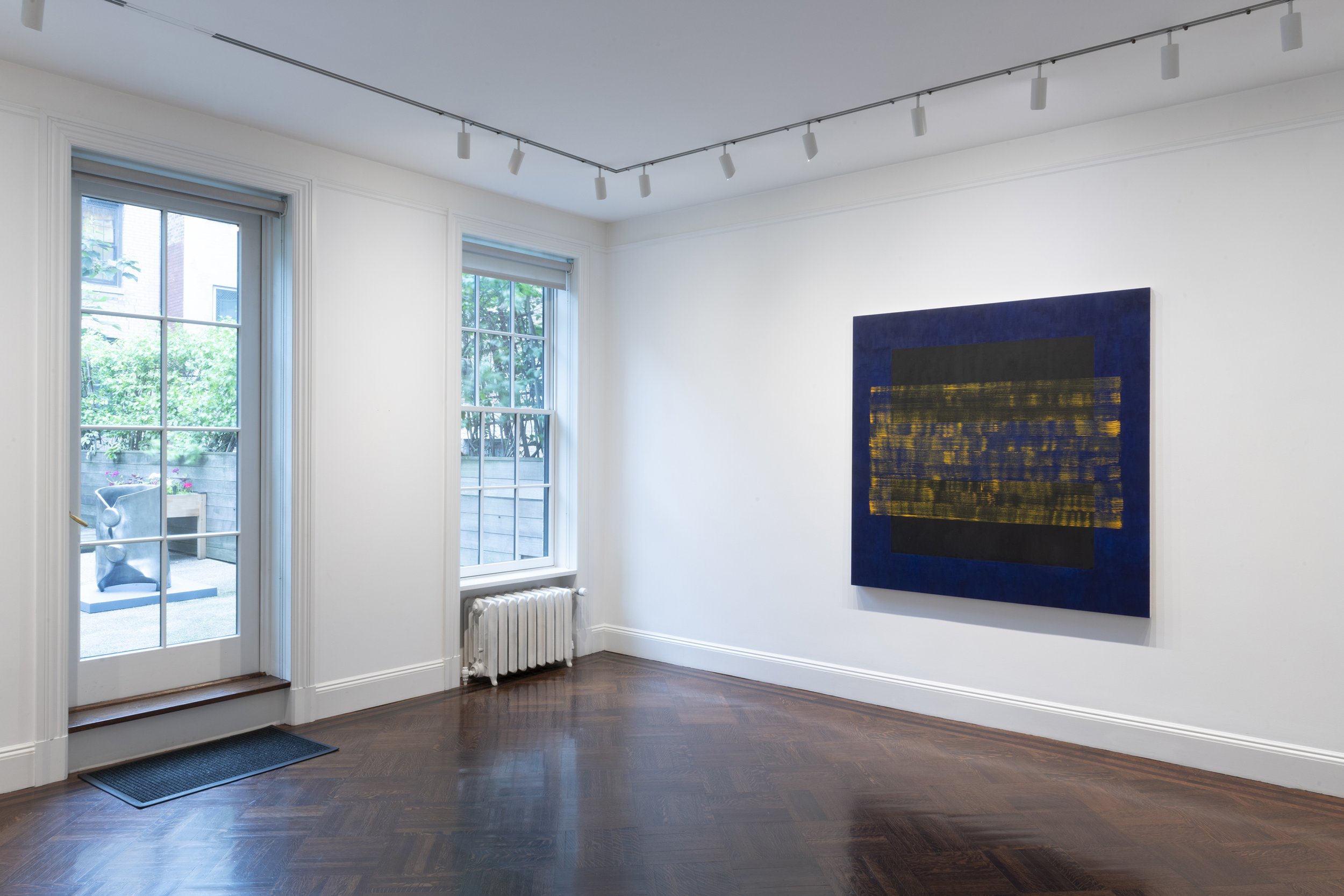Edith Baumann
October 4—November 6, 2021
“In [Baumann’s] paintings, color is radiant, monochromatic fields breathe, and crisp edges quiver almost imperceptibly.”
– Frances Colpitt
Franklin Parrasch Gallery is pleased to present its first exhibition of work by Los Angeles-based artist Edith Baumann (b. 1948). Baumann’s most recent paintings emerge from an ongoing series centered on geometric abstraction and veiled fields. This show includes seven recent works on canvas of varying scale that are deeply connected to Baumann’s love for jazz and her daily meditation practice, and which exemplify her technically-driven process.
Employing modes of structure and spontaneity alike, Baumann’s works present the viewer with opposing representations of form. Thin layers of richly pigmented hand-mulled acrylics are applied to each canvas using small brushes in order to establish a ground of varying depth, through which tightly rendered rectilinear forms appear. Diaphanous fields of color are then suspended above each underpainting, hovering and reverberating atop the forms underneath.
Art historian and critic Frances Colpitt once said, “In [Baumann’s] paintings, color is radiant, monochromatic fields breathe, and crisp edges quiver almost imperceptibly.” The geometric elements that appear throughout these works demand exacting structural execution, while the areas of floating, gauze-like color are the product of Baumann’s graceful and unrehearsed freehand. Much like the pressure Ken Price engaged when sanding the surfaces of his late sculptures, or Miles Davis used when playing the trumpet, Baumann has achieved an equilibrium between extraordinarily finite precision and spontaneity in these works. Baumann has shared that, “When painting, I move back and forth between the positive and negative space intuitively, changing the color – warmer, cooler, etc. One area of color informs the other area.” Contradistinction and tensity are at the core of the visual experience when viewing this work, and the tonal shifts in Baumann’s images are essential in allowing for space and movement to permeate linear and precise foundations, furthering a deft balance between inherently opposing properties.









